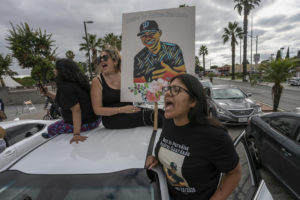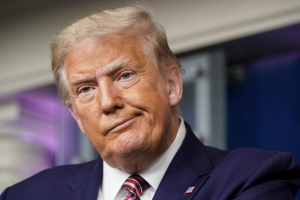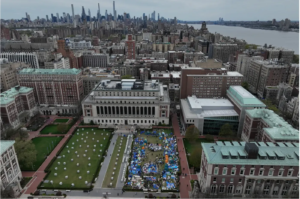Amazonas, the biggest state in Brazil, owes its name to female warriors who according to an ancient legend rode horses in the dark lost forest. The first case of COVID-19 in Manaus, the Amazonas’ capital city of 2·5 million inhabitants, was reported on March 13, 2020. Within weeks, chaos set in earlier and was unlike other cities in Brazil. The city soon received media attention from all over the world when an aerial view of a local cemetery with trenches being dug by an excavator became popular. The image was more shocking than those of Milan or Quito. Politicians in charge said it was a lie, that the number of deaths were being swaddled by left-wing interests, but I, living near the cemetery, noticed the movement even before it was reported. Facing empty streets daily on my way to patients’ houses, I used to come across funeral cars. It was like a video game with me going towards life and others going towards death.I worked to exhaustion treating people in their homes, the true trenches where the battle took place. It felt as if I was in Dottore della Peste, but with an N95 mask as opposed to a long black dress and plague doctor’s mask from the Middle Ages. I was introduced to the intimacy of the families and their frailties, and understood each woman burdened with endless household jobs including the most demanding, that of being a mother, with her children absent from schools and increasingly sick, not necessarily from COVID-19, but mentally.
Although many homes were stocked with medication, the efficacy of some of these suggested treatments had no supporting evidence. I realised some people were using warfarin without medical supervision because a WhatsApp group had claimed it would be a cure. Lay people had so many certainties, I felt like I was the only doubtful one. For these patients, the future was already mapped out: hospitalisation due to cerebral bleeding, an avoidable cause of death in the middle of misinformation and fake news. I cannot forget a lady with respiratory failure and three oxygen cylinders at home—with no intensive care unit beds available, she had made her own hospital setting at home. Not even the established inequalities made the wealthier patients safer. Private hospitals could not be of any help, as no mechanical ventilators were available.Infectious diseases specialists were called to give comfort and guidance, but most of the confounding guidance came from chats and the black hole of the internet. I remember meeting a gentleman using chloroquine and azithromycin, as did most of his contemporaries at the time. The increase in his QTc interval took him to the hospital. Nobody took responsibility for these complications. Those who had recommended the prescription without a signature were gone, swallowed by the many Instagram “likes” and “dislikes”. I asked him to stop taking the medication. Eventually I had to admit him to the hospital due to a life-threatening arrythmia. Later, I learned that even if I had asked, his daughter would have continued giving him the drugs. She believed that I, the physician, was politically committed and she refused my advice.What many did not know is that, rather than these false promises of healing, what they needed most were other types of care. Often I exercised my job of listening to people and calming them down rather than intervening. Doing nothing sometimes is a professional exercise which can also saves lives. And who could listen to me and calm me down? After numerous daily visits I was physically and mentally exhausted late at night. Sometimes, I had to leave patients’ homes with sorrow and pain—one patient told me that if I could not prescribe him with the miraculous drugs touted on the internet I was useless and should be sued. I never prescribed them and, to this day, I do not regret it. I have followed what I was told a long time ago at medical school: “First, do no harm”.There were also the complementary exams. I thought of radiologists who, like me, were working like never before, with an avalanche of CT scans! And it did not stop there. Several weekly or monthly serological tests were completed, not necessarily recommended by the scientific community, but done for mere individual curiosity. I remember a pregnant woman who only left the room to see her husband after 30 days of quarantine, with the certainty that he would no longer be transmitting SARS-CoV-2 because his last result was IgM negative and IgG positive. The saddest part to me: someone gave her that information, maybe even a health professional, as desperate as the patient himself.The days passed and the calls never stopped. I repeated the same guidelines several times like a mantra, and everyone listened attentively, until they found a desperate president, a sudden minister of health, a guru, or an Instagram post that advertised exactly the opposite. Not unlike other health professionals, at some point I will get burnt out. For an infectious disease expert such as myself, working with patients through a pandemic could be the pinnacle of my career, but I never imagined it would be like this. I thought people would value the published clinical evidence, my knowledge, my years of dedication to understanding the behaviour of the microorganisms causing disease. However, when I read about the history of medicine, I realise that pandemics share a similar catastrophe: despair never overcomes rationality. And only when you understand more about humankind, everything becomes more predictable.You think about giving up, until your phone rings again with yet another distress call. Suddenly, the whole city had my cell phone number, and someone who had already taken all types of drugs calls me one night because nothing had worked. I would start over and over, every day, even in the midst of chaos. Facing all the horrors of an undereducated society under the threat of death, I remember the name of the state where I raise my children: Amazonas, the place where some claim to have seen in ancient times a hidden tribe of indigenous female warriors living by themselves and fighting their enemies with bows and arrows. Maybe I just became one of them, maybe I am just a legend, maybe we will forget all these idiosyncrasies one day, I hope…maybe.




